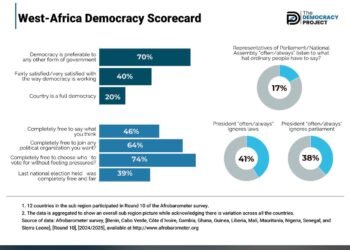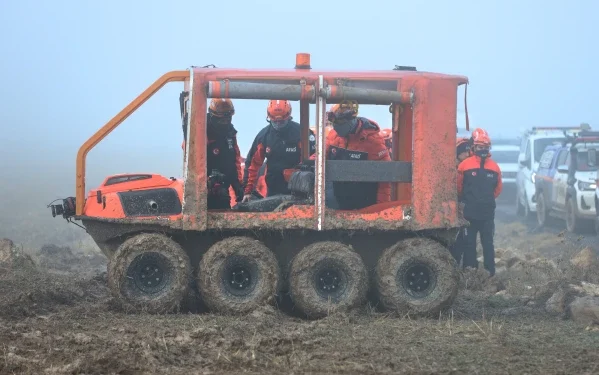In recent years, the conversation about climate change has expanded well beyond the confines of environmental science and policy debates. It has seeped into every facet of our lives, influencing the way we work, live, and love. When we think of climate change, we often picture melting ice caps and rising sea levels, but there is an undercurrent of human experience that is just as compelling.
The relentless progression of extreme weather events, shifting agricultural patterns, and the pervasive uncertainty about our future have found their way into the most intimate corners of our existence. Among the most surprising revelations is the emerging connection between the stresses of a changing climate and the stability of personal relationships. In particular, the bonds of marriage and the increasing likelihood of divorce are being reshaped by environmental challenges in ways that are both subtle and profound.
The pressures wrought by a changing climate manifest in many forms. For those who have built their lives in regions prone to drought, flooding, or wildfires, the daily struggle to secure a future becomes an almost unending battle against the elements. These challenges not only deplete financial resources but also erode emotional resilience. The unpredictability of weather patterns and the constant threat of natural disasters force individuals to confront uncertainties that extend far beyond their control. Amid such upheaval, even the strongest of partnerships can falter. When both partners are faced with the anxiety of protecting their home and livelihood from the relentless force of nature, tensions can run high, and long-held commitments may begin to waver.
It is not simply the physical dangers that sow seeds of discord but also the deep economic and social consequences of climate change. As communities face repeated hardships, resources become scarcer, and competition for what remains intensifies. For many couples, the struggle to adapt to new economic realities introduces a host of conflicts that were previously unimaginable. The traditional roles within a marriage, often built on a stable foundation of predictable income and secure employment, are challenged by environmental disruptions that force a reevaluation of priorities. When the future seems so uncertain and the present so fraught with challenges, it becomes increasingly difficult to maintain a sense of shared purpose. The common dreams and aspirations that, once united, a couple can fracture under the pressure of external forces that neither partner can control.
Beyond the financial and material strains, the emotional toll of living in a climate of uncertainty cannot be underestimated. Relationships thrive on trust, communication, and a shared belief in a stable future. Yet the constant barrage of environmental crises can create a pervasive sense of dread that seeps into every conversation and decision. Anxiety and stress become unwelcome companions, undermining the emotional support that couples rely on. The persistent fear of losing one’s home or the inability to provide for one’s family can lead to an erosion of intimacy. In such an atmosphere, the natural evolution of a relationship may veer toward separation rather than consolidation as partners struggle to navigate a landscape marked by unpredictability and fear.
The Climate Risk Index 2025 relaunch sheds light on inaction’s growing cost. It reveals the mounting human and economic toll.
From 1993 to 2022, more than 765,000 lives were lost and direct economic losses of nearly USD 4.2 trillion (inflation-adjusted) were recorded, driven by more than 9,400 extreme weather events. The frequency and intensity of climate-related disasters continue to rise, and these figures underscore the urgent need for climate action.
The intersection of climate change and personal relationships is not merely a theoretical construct but a reality that is being observed across various communities. In rural areas where agriculture is the lifeblood of local economies, the impacts of shifting weather patterns have long been evident. Years of drought followed by sudden, destructive floods have not only devastated crops but also the very fabric of small-town life. Marriages that once relied on the steady rhythm of seasonal labor and predictable harvests now find themselves caught in a cycle of financial instability and emotional exhaustion. The bond between partners is tested as each day brings with it the anxiety of whether the next season will be kinder or harsher. Over time, the cumulative stress of these environmental challenges can lead to a sense of resignation, where the love that once seemed resilient is slowly eroded by forces that are both external and relentless.

Urban Dwellers
Urban environments are not immune to these pressures either. In cities that are increasingly vulnerable to the impacts of climate change, such as rising temperatures and extreme weather events, the urban landscape itself becomes a source of stress. Residents in these areas often find themselves grappling with the dual burden of environmental degradation and social inequity. When the quality of one’s living environment declines, and the cost of basic amenities climbs due to the need for climate adaptation measures, the strain on household relationships intensifies. The stress that accompanies the struggle for survival in a city that is constantly changing can manifest in disagreements, feelings of isolation, and a diminished capacity for empathy. In such settings, the sanctity of marriage is challenged not by a lack of love but by the overwhelming pressure of adapting to an ever-more hostile environment.
At the heart of these challenges is the recognition that love and commitment are not immune to the broader forces of nature. The intimacy shared between partners is intricately linked to their sense of security and stability. When the natural world, which provides the context for everyday life, becomes a source of fear and uncertainty, the bonds of marriage can begin to fray.
The decision to part ways is often not a reflection of a failure in personal affection but rather an acknowledgment that the stresses of modern life, magnified by environmental crises, have rendered the relationship unsustainable. In many cases, divorce becomes a means of survival—a way to reclaim control in a situation where external forces have steadily stripped away the sense of shared destiny.
There is a profound irony in this emerging trend. Climate change, a phenomenon often discussed in terms of its physical impacts on the earth, is now revealing its ability to reshape the most human of experiences. The very forces that threaten our natural world are also influencing the dynamics of human relationships, challenging our assumptions about love and commitment. In the quiet moments of reflection that follow a tumultuous storm, many couples are forced to confront the reality that the future they once envisioned may no longer be attainable. The dreams that were built on a foundation of certainty and stability are being replaced by a new narrative—one that is defined by resilience in the face of adversity and the painful recognition that, sometimes, love alone is not enough to withstand the onslaught of environmental change.

This evolving narrative invites us to reexamine our understanding of marriage and partnership. It compels us to consider how external pressures, from economic instability to the relentless march of climate change, can shape the course of our personal lives. The decision to end a marriage in the wake of environmental stress is not taken lightly. It is the culmination of countless small moments of strain, whispered fears, and silent despair. Each act of separation is imbued with a deep sense of loss—a loss not only of a personal relationship but of the shared hope for a future that, in the face of environmental uncertainty, seems increasingly out of reach.
The story of love in a changing climate is a reminder of the complex interplay between our inner worlds and the outer forces that govern our lives. It challenges us to acknowledge that our struggles are often reflections of broader societal and environmental issues. As communities around the world confront the harsh realities of climate change, the ripple effects extend far beyond economic statistics and environmental forecasts. They touch the very core of what it means to be human—the capacity to love, to hope, and to dream of a future that is secure and stable.
In grappling with these challenges, it is important to remember that the influence of climate change on relationships is not a predetermined outcome. There is room for adaptation and resilience. Couples who find ways to navigate the stormy seas of environmental uncertainty may discover new depths to their bond.

The experience of facing shared adversity has the potential to forge connections that are even stronger than before, built on a mutual understanding of the fragility of life and the importance of unity in the face of overwhelming odds. In many ways, the crisis of climate change serves as a catalyst for introspection, prompting individuals to evaluate what truly matters in their lives and to invest in the relationships that sustain them.
At the same time, the broader implications of this phenomenon call for a collective response. It is a reminder that the challenges of climate change are not confined to the natural world but permeate every aspect of our society, from the halls of government to the quiet corners of our homes. Policymakers, community leaders, and social service organizations must recognize that the impacts of climate change are as much about human relationships as they are about environmental degradation. By addressing the root causes of environmental stress, societies can create conditions that not only protect the natural world but also nurture the bonds of love and commitment that are essential to our collective well-being.
Love Versus Climate
However, the story of love in a changing climate is one of both caution and hope. It is a narrative that compels us to acknowledge the deep interconnections between the health of our planet and the health of our relationships. While the forces of nature may challenge our ability to maintain the status quo, they also offer an opportunity to redefine what it means to be resilient, to adapt, and to find strength in the face of adversity. The dissolution of a marriage under the strain of environmental stress is not a failure of love but rather a poignant reflection of the broader struggles that define our era. It is an invitation to rebuild, rethink, and reconnect with the values that truly sustain us in times of uncertainty.
As we move forward into an era marked by environmental challenges, the relationship between climate change and personal relationships will undoubtedly continue to evolve. The story is still being written, shaped by the choices we make and the values we hold dear. Amid the turmoil, there remains the enduring possibility of renewal—a chance to transform adversity into an impetus for growth, both in our personal lives and in our collective response to the challenges of a changing climate. Love, in its many forms, remains a powerful force capable of inspiring change and fostering resilience, even when the world around us seems determined to tear it apart.
This reflection on the interplay between climate change and divorce invites a broader conversation about how we as a society choose to respond to the pressing issues of our time. It calls on us to look beyond the immediate impacts of environmental degradation and to consider the lasting effects on the very fabric of our lives. When we acknowledge that the stresses of a changing climate have the potential to disrupt not only our economies but also the intimate connections that define our humanity, we are reminded of the urgent need to address these challenges holistically. In the final analysis, the love that we share with one another is not immune to the tides of change, and it is precisely in these turbulent times that the strength of our bonds is most fiercely tested.
Author: Dominic Ebow Arhin, MSc. Climate Change and Sustainable Development
Center For Climate Change and Sustainability Studies, University of Ghana – Legon
READ ALSO; AU Urged To Refocus on Conflict Resolution and Justice























